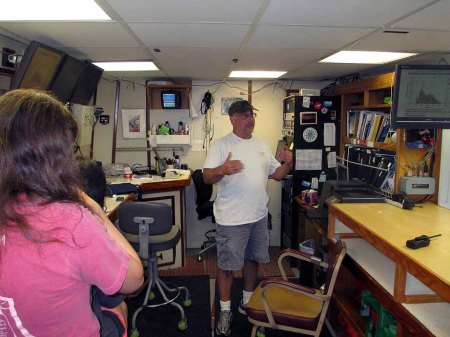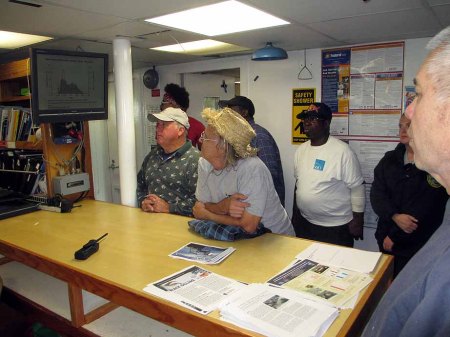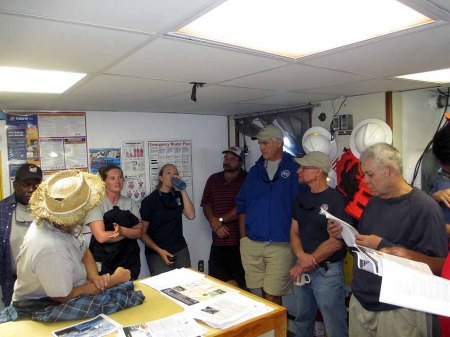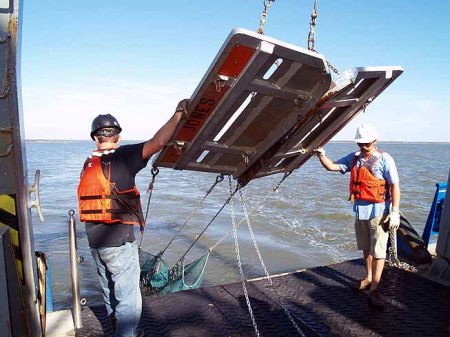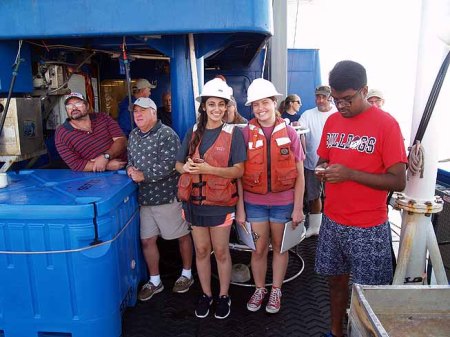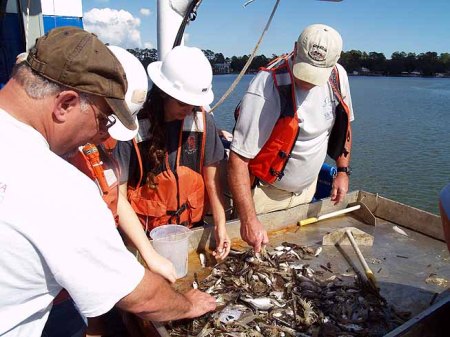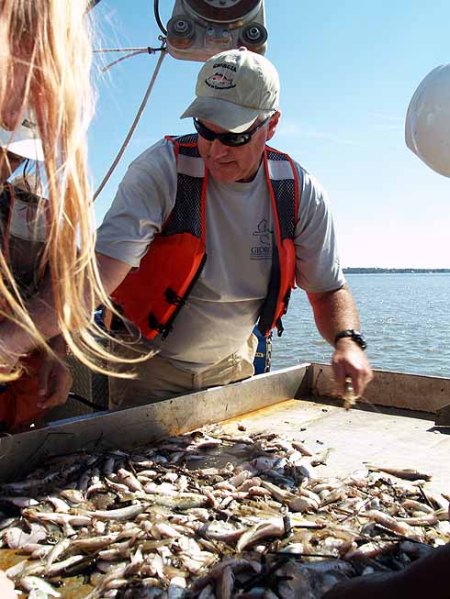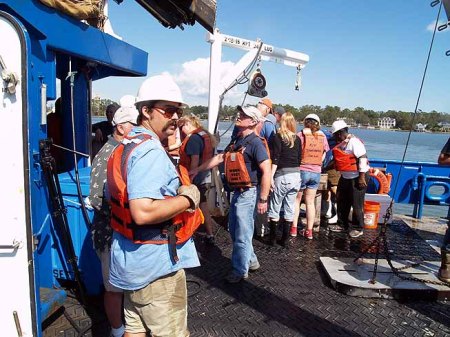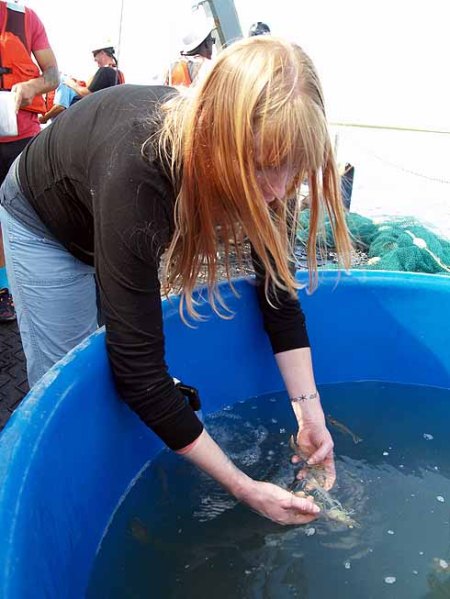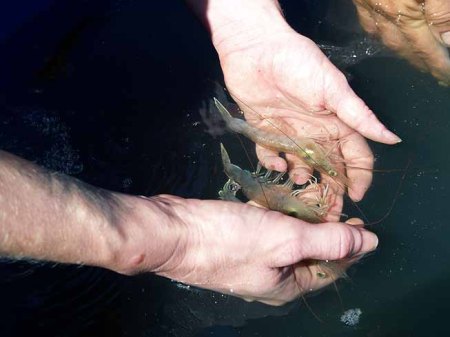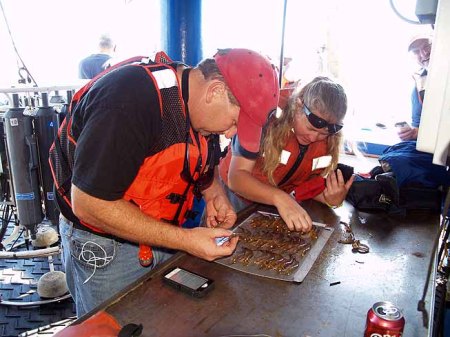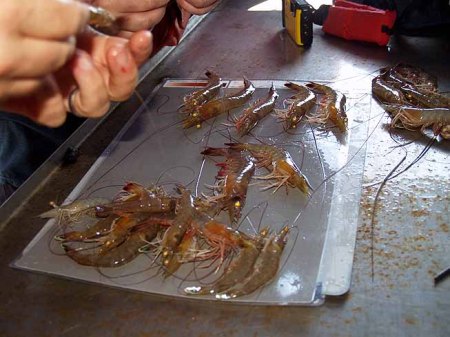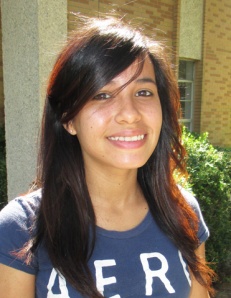23 April 2011
Dr. Marc Frischer
Hi All, it’s back to Barrow Alaska for another sampling adventure. As I’ve discussed before in this blog, the intent of our project is to reach a new and quantitative understanding concerning how microbes (bacteria and phytoplankton) may respond to climate induced changes in the Arctic.
Although there is a very strong consensus among scientists that the world’s climate is changing (For more information, see the footnote at the bottom of this posting.), particularly in the Polar Regions, our understanding of how the organisms will respond is quite limited. At the base of the food web are the microbes and these are the primary focus of our investigations. These tiny organisms are responsible for at least half of the oxygen production (and consumption) on the planet, almost all of the nutrient regeneration, and are the food that support the diet of everything including, to name a few, fish, seals, whales, and humans. In other words, it’s very important that we understand how these microscopic organisms will respond to ongoing climate change, especially here in the Arctic.
To answer these questions we are visiting the Arctic three times a year in the winter, spring, and summer, to make measurements of a large number of microbial parameters and to conduct experiments that will help us understand how the microbes may be affected by climate change. We are sampling at different seasons to account for the astounding amount of seasonal variation that occurs naturally during a year. We can’t sample in the fall because that would interfere with whaling activities that are an important cultural component of the community in Barrow Alaska where our studies are being conducted.
Our team includes scientists from the Skidaway Institute of Oceanography, the University of Georgia, and the Virginia Institute of Marine Sciences. In addition, on this trip a middle school teacher (Lolli Garay) from the Red School in Houston, Texas and an artist (Adriane Colburn) from the University of Georgia are joining us in an effort to help communicate and share information about our efforts and results outside of the science community.
This springtime trip will be the fourth in our 3-year project and the second (and last) time during this project that we will sample during the spring.
The Trip – Saturday 23 April, 2011
Although this is our fourth trip to Barrow Alaska and so a lot of what we are doing is starting to become routine, it still took a lot of planning to get ready for this trip. Since our return in February from our last trip, in addition to processing the winter samples, we’ve been busy planning and organizing the logistics for this trip. Victoria Baylor took charge of most of this effort.
My graduate student from Savannah State University, Zac Tait, is also planning to start some new experiments related to his thesis research, so that took some additional planning efforts.
Finally we were ready. This time we took a different route through Chicago to travel the 6,000 plus miles to Barrow.

Map of route from Savannah GA to Barrow, AK.
This route gets us to Barrow in a single day, but what a day! The way back will be worse though, with a 10-hour layover in Anchorage and another 5-hour layover in Chicago. But the route wasn’t without benefits as we were able to get a Chicago Hotdog for lunch.

Lunch at Gold Coast Hot Dogs in Chicago’s O’Hare airport.
Unfortunately, Zac lost his luggage along the way. Besides his clothes, Zac packed a number of important pieces of equipment in his bag so we’re really hoping it’s not lost forever. We made it to Barrow’s Will Rogers airport after a spectacular flight over Alaska’s Northslope passing over the frozen Yukon River and following the pipeline into Prudhoe Bay.

Alaska’s North Slope from the air.

Alaska pipeline from the air.
We arrived in Barrow in the early evening on Saturday but as we stepped off the plane it was immediately apparent how different it was compared to the winter. First of all, it was sunny! Last time we were here the sun was just appearing after 3 months of being absent. Although there was light, it was perpetual twilight time. Today there was 18 hours of sun and its light from about 2 am to 11:30 pm and on May 11, a week after we depart the sun will be up for 24 hours a day until the next sunset on August 1st. Its also considerably warmer though still well below freezing. Right now its -4°F (-20°C). There are also other very visible changes. The sea ice is beginning to break-up and is piled-up on the beach as a result of past storms. The snow on the streets is also beginning to melt (because of all the sunlight) and the roads are dusty rather than snowy.
Other evidence of the long winter are several ice and snow carvings that have appeared around town, some rivaling Mount Rushmore but with a more Arctic theme.

Ice carvings in downtown Barrow.

Polar bear ice carving along the coastal road.
But, despite the change of season returning to Barrow was a bit like coming home. We were picked-up at the airport by Tony Kaleak and Frantz Brower who are members of our logistic support group, UMIAQ. Tony and Brower (no one calls him Frantz) updated us on the recent gossip and many organizational changes that have occurred since we were last in town and got us checked in to our living and working quarters. The rest of the group won’t arrive until tomorrow evening so we set about surveying our equipment and space and planning for the next day.
Around 8pm we called it quits got some dinner at our favorite Barrow restaurant “Arctic Pizza” and tried to sleep. It was tough though since the sun didn’t set until 11:30 and rose again around 2am.
